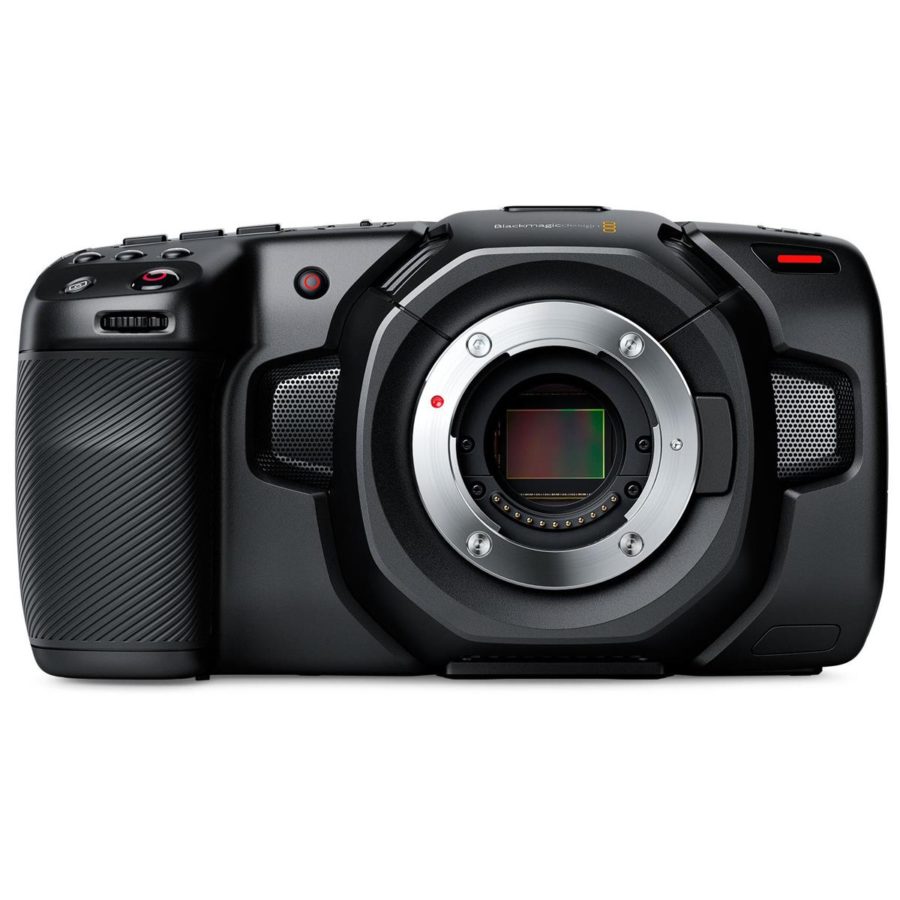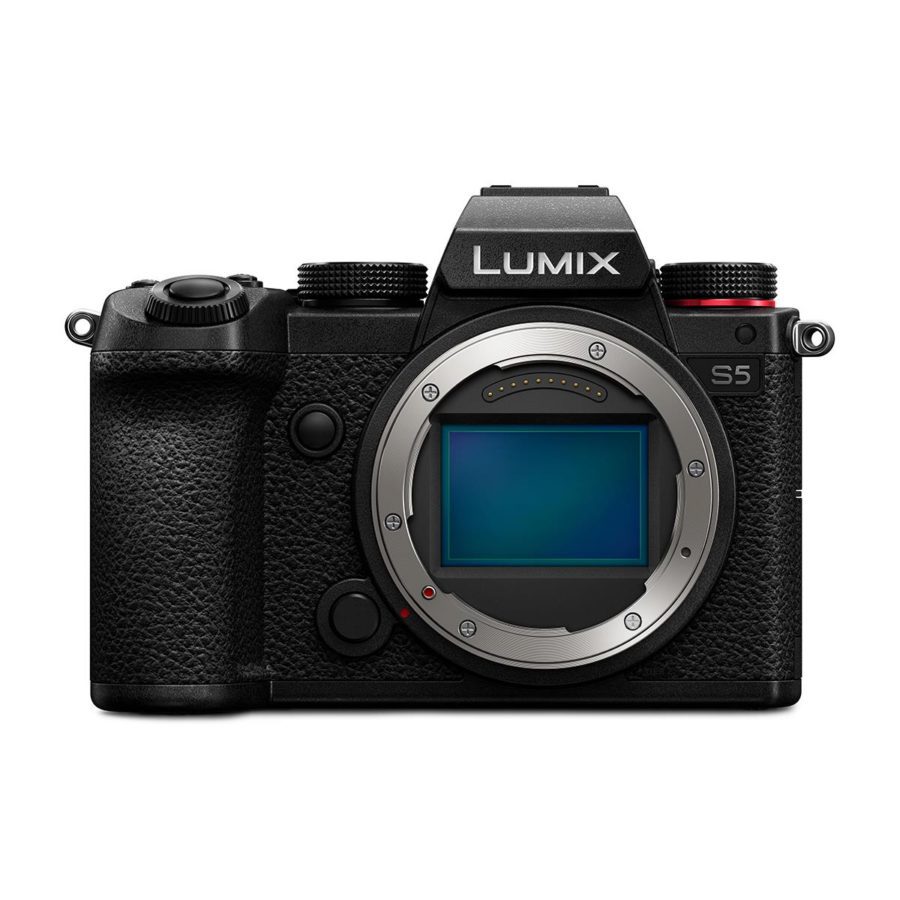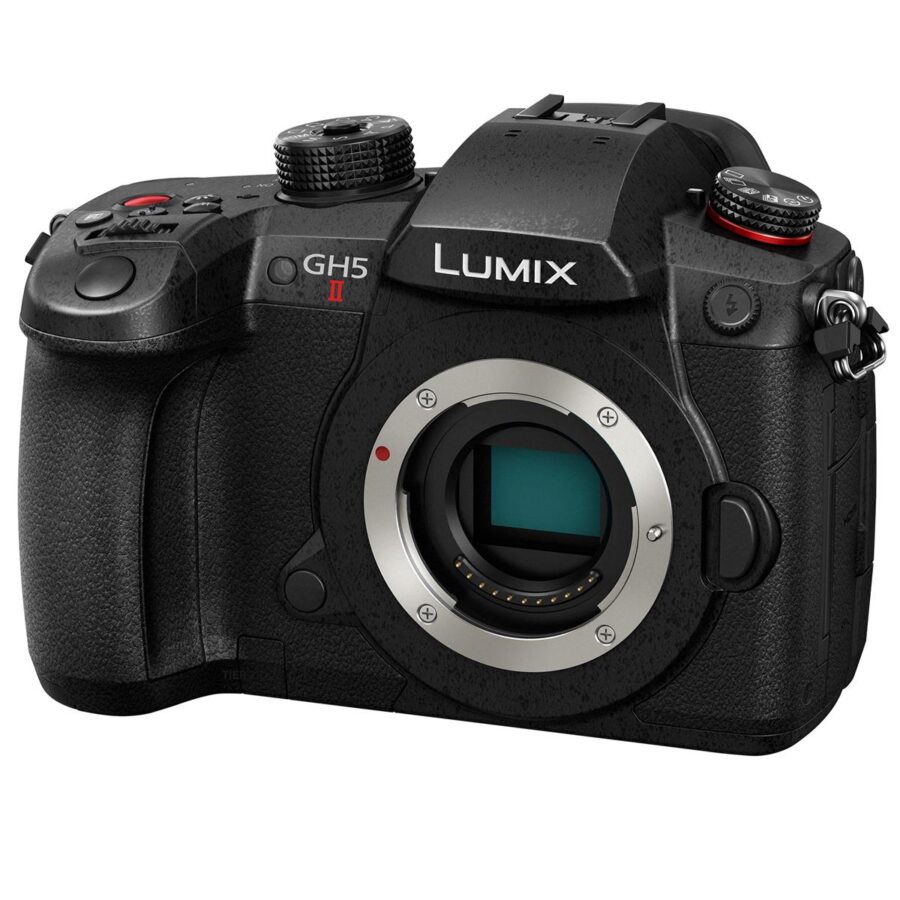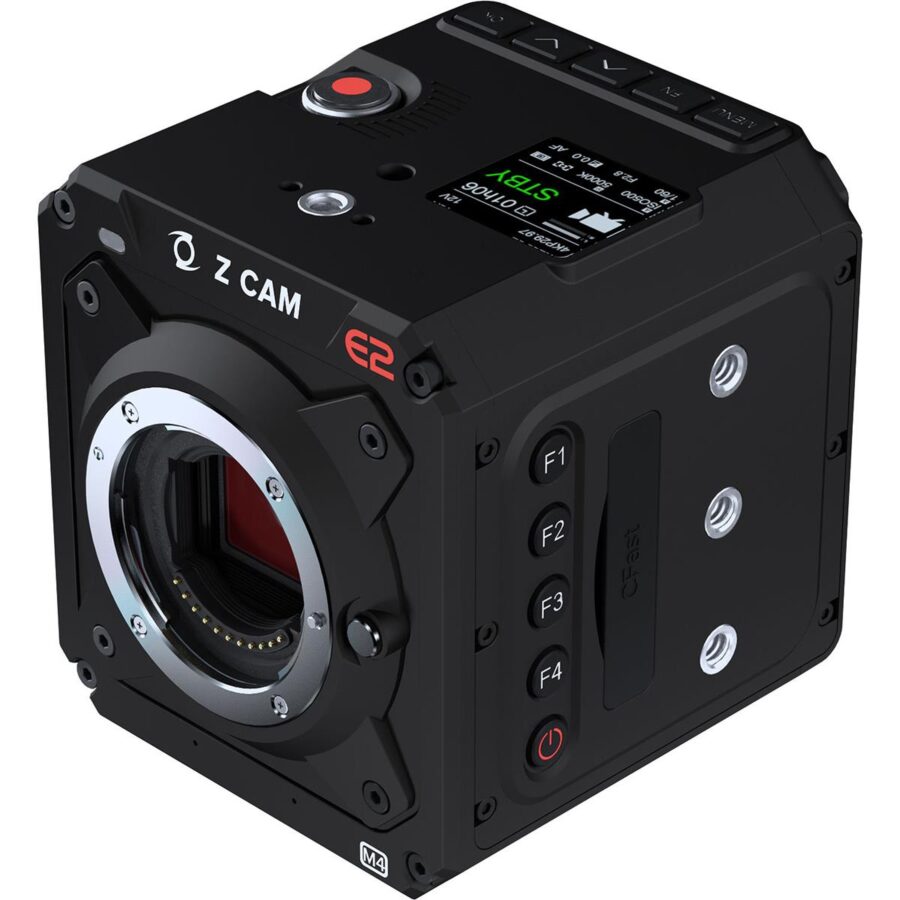DISCLOSURE: AS AN AMAZON ASSOCIATE I EARN FROM QUALIFYING PURCHASES. READ THE FULL DISCLOSURE FOR MORE INFO. ALL AFFILIATE LINKS ARE MARKED #ad
Finding a new camera that checks all the boxes for current cinematography standards can be confusing.
Not at least because you have to factor in all the high costs for bodies, interchangeable lenses, a camera cage, lighting, audio equipment, and more.
So, I’ve compiled a list of some of the best cinema cameras under $1500 in 2023 that will give you a lot of bang for your buck.
1. Black Magic Pocket Cinema Camera 4K (BMPCC4K)

The Black Magic Pocket Cinema Camera 4k is one of the most popular, affordable cinema cameras for filmmaking. This camera has outstanding capabilities despite its size.
It’s still one of the best entry-level cinema cameras today. You can read the FilmDaft full hands-on review here.
You get a next-generation handheld 4K digital film camera with all the professional-grade features of the more expensive and much larger cameras on the market.
The BMPCC4K has an 18.96 x 10 mm (4/3) CMOS image sensor with 100 to 25,600 ISO and 13 stops of dynamic range.
You can record HD using standard SD cards, Ultra HD in ProRes at 60 fps, and RAW at up to 30 fps using UHS-II cards—CFast 2.0 cards record 12-bit RAW at all supported frame rates.
The camera’s design supports filmmaker must-haves like a Micro Four Thirds lens mount, mini XLR input, Bluetooth, built-in microphone, and USB-C Expansion Port.
Product Specs:
- 4K video recording capabilities
- Advanced Blackmagic color science
- Carbon fiber reinforced composite body
- 5-inch touchscreen display
- RAW recording features
Pros:
- Great value
- MFT mount allows for adapting many lenses, including vintage options
- Exceptional image quality
- SD, UHS-II, CFast compatible
- Portable and lightweight design
- Integrates various functions, reducing accessory needs
Cons:
- The MFT sensor is not great in low light
- No sensor stabilization
- No electronic viewfinder
- No continuous autofocus
- Battery life may be shorter than some competitors.
- Requires investment in fast storage for RAW footage
Panasonic Lumix DC-S5 Mirrorless Digital Camera

The Panasonic Lumix DC-S5 Mirrorless Digital Camera enhances filmmaking for budget-conscious creators, blending full-frame sensor excellence with advanced video features.
The camera’s 24.2 MP sensor, with Dual Native ISO Technology, optimizes dynamic range, capturing over 14 stops with V-Log & V-Gamut for a VariCam-like appearance.
Designed for superior performance in dim conditions, the S5 supports 4:2:2 10-bit internal recording and offers strong HDMI output, meeting the needs of on-site flexibility and post-production color grading.
The refined autofocus system of the S5 incorporates AI technology to achieve precise detection of head, eyes, face, and body, maintaining focus in narrative and documentary projects.
The 5-axis Dual I.S. 2 system allows for handheld shooting with a 6.5-stop slower shutter speed, reducing the necessity for additional stabilization gear.
The S5’s dual SD card slot setup adds versatility, improving file organization and backup during recordings.
The S5’s compact and resilient design resists dust and splashes and can withstand challenging field conditions. Its heat dispersion system allows for extended recording sessions at high resolution and frame rates without the risk of overheating.
The camera’s innovative features, such as Live View Composite mode and the Slow & Quick Motion feature with FHD 180fps, make it a robust tool for imaginative visual stories.
Product Specs:
- 24.2 MP Full-Frame Sensor
- Dual Native ISO Technology
- 4:2:2 10-bit Internal Recording
- 5-axis Dual I.S. 2 with up to 6.5 stops
- Dual SD Card Slot (UHS-II/UHS-I)
- Dust and splash-resistant
Pros:
- Excellent low-light performance
- Advanced autofocus with AI technology
- Compact and durable with heat dispersion
Cons:
- Limited to 4K 60p in APS-C crop mode
- Continuous autofocus performance may lag behind competitors
- The high-resolution mode requires a tripod
Canon EOS R8 Mirrorless Digital Camera

The Canon EOS R8 Mirrorless Digital Camera enters the market as a versatile competitor, blending full-frame imaging capabilities with a lightweight design.
A 24.2MP CMOS sensor paired with the DIGIC X processor delivers high-resolution images and a wide dynamic range. The camera boasts an impressive ISO range of 100-102400, which can extend to 204800, to perform well in low-light situations.
The R8 features the advanced Dual Pixel CMOS AF II autofocus system with 1053 AF points that span the entire frame, keeping the focus sharp during video capture. The camera offers 4K movie recording at up to 60 fps without crop, enhancing its appeal to videographers.
Including USB-C, Wi-Fi, and Bluetooth provides easy integration into a filmmaker’s workflow. The camera also comes with in-body 5-axis image stabilization, reducing camera shake and ensuring steady footage.
Product Specs:
- 24.2MP full-frame CMOS sensor
- DIGIC X image processor
- ISO 100-102400 (expandable to 204800)
- Dual Pixel CMOS AF II with 1053 AF points
- Uncropped 4K at 60 fps
- USB-C, Wi-Fi, Bluetooth connectivity
- 2.36 million dot OLED EVF
Pros:
- Excellent image quality
- Superior AF performance
- Strong low-light capabilities
- High-resolution, uncropped 4K video
- Comprehensive connectivity options
Cons:
- Limited lens selection with RF mount
- Battery life may be insufficient for extended shoots
- Lacks some professional features found in higher-end models
Panasonic Lumix GH5 II Mirrorless Camera

The Panasonic Lumix GH5 II Mirrorless Camera, compact yet powerful, stands out as an excellent option for filmmakers who seek top-notch video performance.
The GH5 II builds on the series’ well-established reputation for dependability and adaptability by introducing new features like wireless live streaming and advanced image stabilization to meet the changing needs of content creators.
Broad compatibility with various lenses and accessories and the ability to record video without limits in different contexts equips users with an extensive toolkit for both in-studio and on-location production.
Despite its lightweight construction, the camera retains a strong build, apt for rigorous filming sessions.
Pre-installed photo style presets aid in streamlining post-production processes, enabling filmmakers to capture their desired aesthetic directly through the camera.
Product Specs:
- MFT sensor
- Wired and wireless live streaming capabilities
- Unlimited video recording
- Photo style presets
- Advanced image stabilization
- Durable construction
- ISO100 for optimal exposure
Pros:
- The MFT mount allows for adapting multiple lenses, including vintage options.
- Excellent weather sealing
- High video quality in a compact size
- Versatile lens compatibility
- Streamlined editing with style presets
- Effective stabilization for handheld use
Cons:
- Not great low-light performance
Z CAM E2-M4 4K Cinema Camera

The Z CAM E2-M4 4K Cinema Camera is a competent, cost-effective choice for filmmakers.
With features like a 4/3 WDR CMOS sensor and the capability to shoot 160fps in 4K, you can capture rich, detailed images with its 10/12-bit color support, and the dynamic range extends to 16 stops with WDR, delivering exceptional image quality in various lighting conditions.
The support for the ZRAW format offers flexibility in post-processing, enabling precise color grading and visual effects.
The camera’s Gigabit Ethernet connectivity highlights its alignment with modern production workflows.
This feature enhances data transfer, camera control, and live streaming, making the E2-M4 a sophisticated tool for filmmakers who seek high performance while adhering to a budget.
Product Specs:
- 4K recording at up to 160fps
- 4/3 WDR CMOS sensor
- 13-15 stops dynamic range (extendable to 16 with WDR)
- 10/12-bit color support
- ZRAW (partial debayer) support
- Gigabit Ethernet for data, control, and live streaming
Pros:
- Cost-effective 4K cinema camera
- High frame rate capabilities
- Flexible post-processing with ZRAW
- The MFT mount allows for adapting multiple lenses, including vintage options.
Cons:
- MFT sensor is not great in low light
- Dynamic range may require WDR for full potential
- Additional accessories needed for optimal use
Buyer’s guide: What to look for when buying an entry-level cinema camera
When looking for a cinema camera under $1500, here are some features to consider:
1. Sensor Size and Type
Larger sensors generally provide better image quality and low-light performance. Look for Full-frame, Super 35mm, APS-C, or Micro Four Thirds sensors. Smaller sensors than MFT are mostly used as an effect today.
2. Resolution and Frame Rates
Ensure the camera can shoot in 4K resolution, which is considered standard for most production work. Also, check if it offers high frame rate options for slow-motion footage.
3. Dynamic Range
A wider dynamic range allows you to capture more details in the highlights and shadows, which is crucial for achieving a cinematic look.
4. Codecs and Bit Rates
Look for cameras that offer robust codecs like ProRes or Blackmagic RAW, giving you more post-production flexibility.
5. Color Science
Good color science is essential for pleasing skin tones and an overall cinematic image. Each manufacturer has their color science, and while some prefer Sony colors, others prefer Canon or Panasonic. To get the most flexibility in color correction, color grading, and post-production, ensure your camera can shoot in RAW or LOG (flat profile).
6. Input/Output Connections
Professional I/O options like HDMI, SDI, XLR audio inputs, and timecode are important for integrating with other professional equipment.
7. Media Storage
Consider what type of storage media the camera uses and the cost of that media, as well as file sizes and data rates. You can read more in this guide.
8. Lens Mount
Check the lens mount compatibility and the availability of lenses within your budget.
9. Ergonomics and Build Quality
The camera should be comfortable to use for long periods and durable enough to withstand the rigors of a production environment.
10. Accessories and Expansion
Look for a camera that can be easily rigged with additional gear such as matte boxes, follow focus systems, external monitors, and gimbals.
Conclusion
So that’s it.
Feel free to leave a comment below if you have any questions. We’re always here to help.

